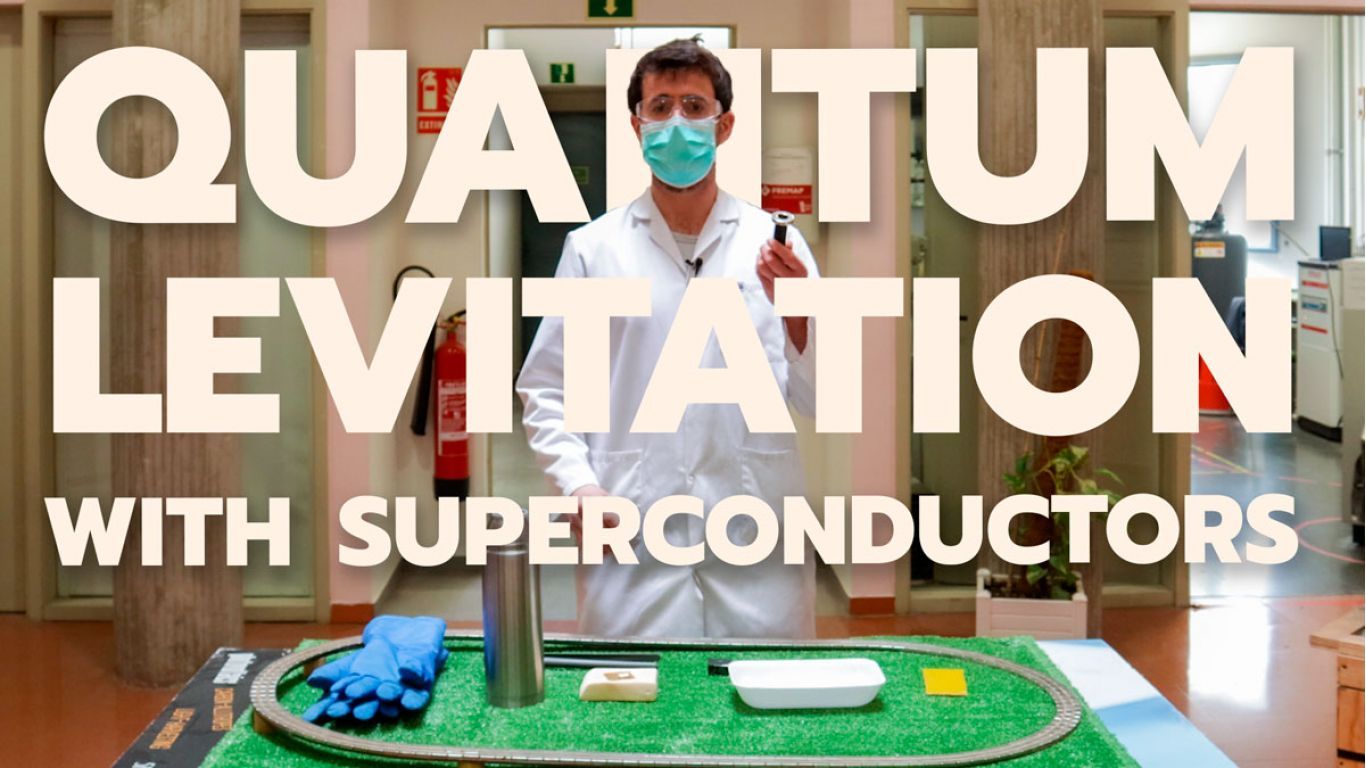
New outreach video: What are superconductors, and why do they levitate?
ICMAB Researcher Ferran Vallès, an former student of our group, covers the fundamentals of superconductivity in this new video. In particular, the quantum levitation phenomenon.
Researching superconductors is an integral part of one of the main Research Lines at ICMAB. A current objective is the design of cost-efficient superconducting tapes to enhance efficiency and reduce environmental impact in electricity transport, distribution, generation and use. To understand how that may be possible, we first have to understand how superconducting materials work. This short video by ICMAB Researcher Ferran Vallès, from the Superconducting Materials and Large Scale Nanostructures (SUMAN) Group, showcases how superconductors work in a simple way.
So what is happening in this video?
The superconductor being demonstrated is YBa2Cu3O7-x (YBCO), a ceramic material that shows no relevant properties at room temperature. Superconducting materials can conduct electricity with no resistance, and also have interesting properties relating to magnetic fields, but only when they are below a critical temperature. In order to get interesting properties out of them, they have to be cooled to a specific temperature. In this demonstration Ferran Vallès uses liquid nitrogen to drop the YBCO’s temperature down to -195,8ºC (77º K).
The ceramic superconductor transitions through its critical temperature, engaging in the superconducting state. When it enters its superconducting state while being close to a powerful magnet, the magnetic field penetrates the YBCO by means of quantized flux lines called vortices, which causes it to levitate on top of the powerful magnet. However, what Ferran Vallès shows is not only levitation: the superconductor is floating below the magnet, suspended in the air, almost like it is locked with the magnet while never touching it!
This is caused by small imperfections induced during the synthesis of the material. These imperfections pin the flux lines through the ceramic while the rest of it expels the magnetic field, effectively locking the two materials at a specific distance and position. Once the material leaves the liquid nitrogen, it gradually warms up past its critical temperature, losing its superconducting properties, which causes the magnet to fall.
A similar phenomenon happens with the small train model: the YBCO achieves a superconducting state while locked to the magnetic tracks, allowing it to hover over the tracks with little resistance until the material warms up again while the material is below the supercritical temperature. This small model mirrors technologies already being used in real life. It’s the case of the Shangai Transrapid, a maglev (magnetic levitation) train that can cover more than 30 km in just over 8 minutes, with a top speed of 430 km/h. While the technology is still far from becoming the norm due to high cost and difficulties in its application, there are a lot of advantages that make it an appealing field of research, like the potential higher speeds it can achieve, or the reduction of maintenance and noise due to the fact that the train is not sliding on rails, but levitating on top of them.
This is not the only possible application of superconductors. The current main use of superconductivity is in the powerful electromagnets used in Magnetic Resonance Imaging (MRI) systems, as well as for research, like the RF particle accelerator cavities used in high energy physics experiments.

